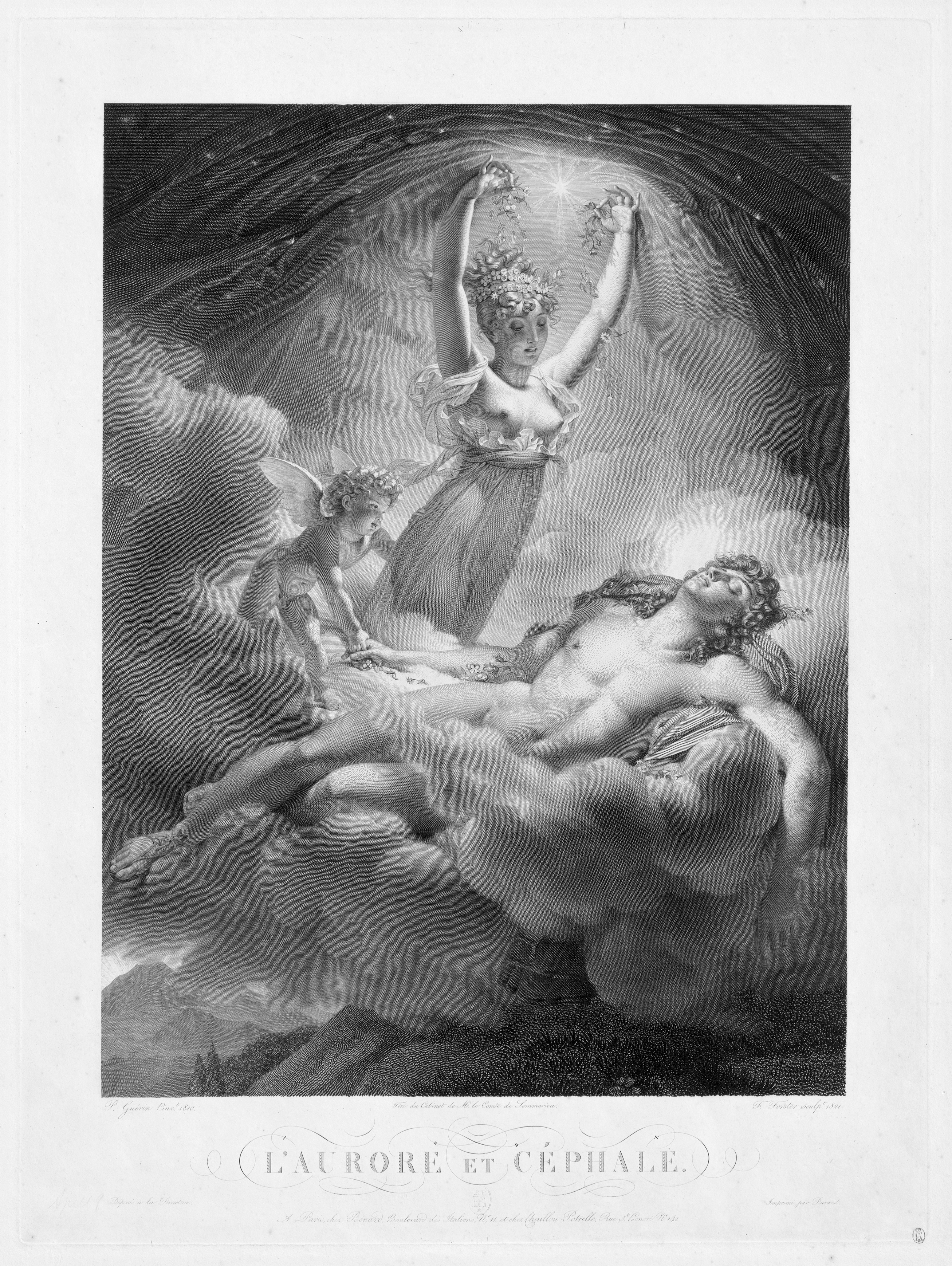Loading the page ...
François Forster
(1790 Le Locle – 1872 Paris)
Aurora and Cephalus. Engraving after Pierre-Narcisse Guérin. 56.6 x 41.9 cm. 1821. Inventaire du Fonds Français 10.
Having initially trained as an engraver of watches, the Swiss engraver and lithographer, François Forster, departed in 1805 for Paris, where he enrolled at the École des Beaux-Arts and studied under Pierre Gabriel Langlois. In 1814 he won the coveted Prix de Rome, but at first could not embark on the study visit to Italy to which the award entitled him. A scholarship from the Prussian state eventually enabled him to spend two years studying in Rome. After returning to Paris, Forster regularly exhibited his works, for which he received numerous honours, at the Salon. He became a French national in 1828 and was made a Knight of the Legion of Honour ten years later. Forster’s engravings, including many historical reproductive engravings as well as portraits and book illustrations, are notable for their clear linework and refined use of the burin.
The present scene showing Aurora, who has fallen in love with the sleeping Cephalus, has its origins in a painting made in 1810 by Pierre Narcisse Guérin which is now in the Musée du Louvre in Paris. An examination of the refined, nuanced engraving technique, the distinct elegance of the figures and the very subtle gradation of the tonal values makes it clear why Forster is now considered one of the foremost representatives of 19th century academic engraving. The subliminally erotic element in the scene, which is bathed in an almost surreal light, is a typical feature of French Empire art. A superb, precise impression with even thread margins. Minor ageing, otherwise in excellent condition. From the collection of Frederick Augustus II of Saxony (Lugt 971).
Contact us for further information